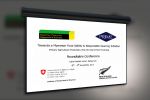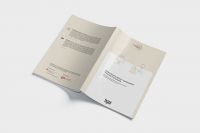The draft tourism law: Fit for purpose?

Further changes are needed to the Ministry of Hotels and Tourism’s latest draft to ensure the new law meets the sector’s needs and guides sustainable development.
This article, by Tulika Bansal, originally appeared as part of Discover Myanmar, Frontier's special report on the tourism industry.
THE 1993 Myanmar Hotels and Tourism Law – enacted in 1990 and replaced three years later – is being revised, making it a good time to reflect on what a tourism law is for and how it can shape the sustainable growth of the sector.
A fresh law is needed to deliver on the Myanmar government’s commitment to responsible and community-based tourism, and incorporate international standards and best practices. It should also recognise the current reality and challenges of the industry.
Thanks to the work of the previous minister, U Htay Aung, tourism is ahead of other sectors in having policies and plans in place, including the Tourism Master Plan, the Responsible Tourism Policy, the Community Involvement in Tourism (CIT) Policy, and the Ecotourism Policy. These are comprehensive documents that need implementation across the country.
The Tourism Master Plan, which runs from 2013 to 2020, prioritised the updating of the law. In a 2013 interview, Htay Aung said that “the law is very old. It is not suitable for this century.”
He added that in drafting a new law, the ministry would consider the current state of the industry, how to best prevent “unwanted side effects”, and how to protect the culture and environment. “We will study neighbouring countries’ tourism laws and look at what our tourism law lacks,” he added.
The Ministry of Hotels and Tourism has since worked on a new law with the support of the United Nations World Tourism Organization and others. There has been public consultation, with draft versions of the law – the latest from June – posted on Facebook, and discussions held with the industry and development partners.
However, the June draft still bears traces of the old days whereby tourism was managed through licensing and lists, and committees without a cause were created in the absence of clear regulatory thinking.
It would be good if the new minister, U Ohn Maung, who has spent his life in tourism, could cast a fresh eye over the draft and reopen discussions with a variety of stakeholders – including at the state and region level – about whether the draft law is really fit for purpose.
In particular, the draft should be tested against current challenges in the tourism sector – particularly waste and water management, and municipal planning – to see whether it provides the regulatory basis for the ministry to ensure a whole-of-government approach to tourism.
For example, the ministry needs influence over zoning plans at actual and potential tourism destinations so that valuable assets for tourism are not destroyed. It also needs to be able to influence plans for development of human resources to ensure the requirements of the tourism sector are considered.
While the law mentions tourism businesses, consumers and authorities as stakeholders to whom the law applies, it does not include local communities. They can be negatively or positively impacted by tourism, and need to have a voice, as the CIT Policy underlines.
To ensure their protection and underline their participation in tourism development, there should be an explicit reference in the law to the rights of local communities, including indigenous peoples.
The draft Tourism Law does also not articulate clearly how the sector should be regulated by other laws, or how these laws should take the needs of tourism into account. This is one of the key challenges for the industry.
Examples of laws that impact tourism relate to land use, building permits, labour, safety, transport, immigration, fire, security, public order, environmental protection, health, hygiene, food safety, protection of cultural and natural heritage, data privacy, tax, and statistics – the list goes on and on.
Another development not addressed in the current draft law is that of the growth of domestic tourism. More and more Myanmar citizens are travelling for pleasure or pilgrimage. The Chaungtha Hoteliers Association estimates there are 20,000 to 30,000 overnight guests at the beach each night during the Thingyan holiday, almost all of them Myanmar citizens.
When the Myanmar Centre for Responsible Business was researching its 2015 Sector-Wide Impact Assessment (SWIA) on tourism, the pilgrimage industry association gave an estimate of four million Myanmar domestic tourists in 2014. That is four times the generally accepted number for foreign tourists (the official figure is inflated by border arrivals).
In addition to recognising the importance of domestic tourism for local growth and jobs, now is also the opportunity remove artificial distinctions in hotel licensing that create red tape and corruption opportunities, and appear to suggest locals should expect lower accommodation standards.
The rights of the “consumer” – in other words, the tourist – are also not included in the law. Vietnam and Indonesia, which have experienced a similar situation to Myanmar, where tourism has increased rapidly during a short period after enduring a phase of political turmoil, have explicitly included the rights of tourists in their national tourism legislation.
The laws mention that tourists have the right to obtain accurate information about products and services offered by tourism businesses; to enjoy privacy, safety and security; to obtain tourism services of adequate quality and hygiene levels; and to report grievances related to tourism products and services. Another important provision missing in the current draft relates to regulation regarding insurance for both tourism businesses and tourists.
Finally, the draft law is unclear what powers are delegated to region and state governments, and local authorities and communities. It mandates the creation of Regional Tourism Authorities, to be chaired by state and region chief ministers, but their purpose, tasks and powers are not explained.
The law also makes no mention of destination management organisations. These are cross-governmental bodies that bring in municipal authorities and other stakeholders at the local level. They are needed to protect, manage and promote tourism destinations.
The need for these organisations was recognised in the Tourism Master Plan. The first such organisation has been created for Inle Lake. At a recent workshop at Ngapali Beach, in Rakhine State, a similar need was identified for the area.
A new tourism law is needed and it’s positive that the drafting process is underway. However, the draft needs to catch up with recent changes in Myanmar and meet challenges identified by sector stakeholders.
Indeed, the first step could be to drop the reference to “hotels” in the name. This would ensure that the law recognises the importance of the entire tourism value chain, including small and micro businesses, and takes a strategic view of the ministry’s role as an enabler of sustainable growth.
About the Author:
Tulika Bansal is a senior adviser at the Danish Institute for Human Rights, which conducted the Tourism Sector-Wide Impact Assessment in 2015 together with the Institute for Human Rights and Business.
ဆက္စပ္ေသာ အေၾကာင္းအရာ
- Tourism Sector
- New Report and Upcoming Webinar on Human Rights in Tourism
- White Paper on Tourism in Myanmar
- ယဥ္ေက်းမႈအေမြအႏွစ္ထိန္သိမ္းေရးႏွင့္ခရီးသြားလုပ္ငန္းအားစီမံခန႔္ခြဲျခင္းျဖင့္ ေျမာက္ဦးေဒသအတြက္ပိုမိုလွပေသာအနာဂတ္ျဖစ္ဖို႔ စတင္ျပင္ဆင္
- 4th National Conference on Communities and Tourism 2019
Share:

 English
English မြန်မာ
မြန်မာ မြန်မာ (unicode)
မြန်မာ (unicode)











